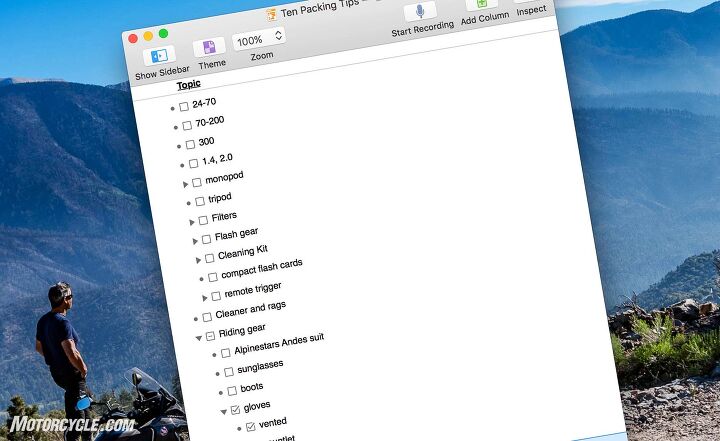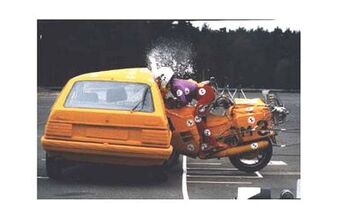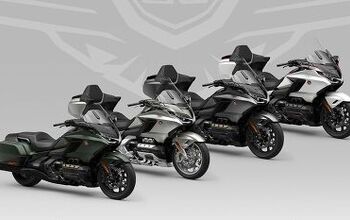10 Tips For Packing For A Motorcycle Tour

While my colleagues do enjoy teasing me about my tendency to overpack, I have a pretty extensive background in motorcycle touring and, before that, backpacking. Also, I believe that I’m the only member of the MO staff that has ever lived on a bike for a period of months. (While chronologically, my cross-country trek took over three months, I spent about four weeks of that period living in a “nest” of gear in the corner of a friend’s Phoenix apartment.) Before settling down to a life of domesticity, child-rearing, and working in the motorcycle industry, my periodic freelance employment allowed me to hit the road for extended road trips. From these two-wheeled forays, I will now give you a little insight into the twisted world that is my technique for preparing for a motorcycle tour.
10. Start With a Written List
Perhaps it’s because I started riding with a months-long tour, read everything I could find about the activity, and early on, cut out multiple lists of must-have items from motorcycle magazines, all of my trips begin with a list. I’ve even saved a couple versions: one for camping, one for hoteling, and sub-lists for those trips that will involve serious photography (MO road tests or trackside race photography). So, I highly recommend that you write everything down. Just brainstorm. Consider the weather you’re likely to encounter. Will you only be riding or do you plan on hiking or being a tourist in a city? Hotels or camping or both? Cooking your own meals or eating road food? All of these decisions will influence what you might decide to take with you on your tour. Don’t edit yourself. Imagine every situation you might encounter. This is just the beginning.
9. Arrange Items in Categories
Now, the editing begins. Arrange your list into categories: riding gear, tools, camping supplies, clothing, toiletries, navigational equipment, cameras. I used to do this on separate pages in a spiral notebook, but now I use outlining software on my computer. Once you have these items in their groups, you can begin to consider whether you need them or not. Also, you might find that the categories help you to remember something important you might have forgotten.
8. Gather Items on List
You don’t want to find out the day before your departure that you’re missing something important. Maybe you loaned it to a friend. Who knows? Also, the only way to accurately visualize the volume of your gear is to assemble it in one place. Spread the gear out so that you have room to work. The garage floor or the middle of your living room (my wife just loves when I do this) are two good options. Don’t make just one massive pile, though. Group them by category.
7. Set Up Equipment for Use
This step is the easiest to convince yourself to skip when you’re pressed for time. Don’t. Do you really want to find out that you’re missing tent stakes at night, in a campground 50 miles from anywhere – in the rain? The fact that the stakes were in the tent bag when you set it up last Fall will be of little consolation. The same is true of your camp stove on a 40° morning when all you want is a cup of coffee.
6. Combine Items to Take Up Less Space
Look at the gear you’ve assembled and visualize where you could pack things together to make the load more compact. A tent, its drop cloth, and a sleeping pad are a natural group. Just bind them together securely so that the tent doesn’t slide out of the roll while you’re riding. (Don’t ask me how I know this could happen.) Similarly, less-used, smaller items can be combined into a small container. For example, the toiletries and the shoes shown in the photo above.
5. Plastic Bags Are Your Friends
You’ll be hard-pressed to take too many plastic bags. Obviously, you can use them to keep items dry or use them to organize loose items, like cooking utensils. Even if your sleeping bag’s stuff sack claims to be waterproof, put a tall kitchen trash bag in the stuff sack before cramming the sleeping bag home. Plastic grocery bags can hold trash in a campground or wet clothes until you have a chance to hang them up to dry. Finally, you can reduce the volume taken up by your clothing by putting it in gallon zip-lock bags, squeezing the excess air out and then sealing it. The photo above shows three t-shirts, three pairs of underwear, and three pairs of socks that will take up about half the space in a saddlebag than they would loosely.
4. Prepack Your Load
The best way to discover that, despite your best efforts, you’re trying to carry too much gear on a trip is to attempt loading it on your motorcycle. The bike loading can often lead to comical results. If you’re not sure about the load on the bike, take it out for a ride to make sure you can handle it with your gear attached. The photo above is a good example of a bike with a vastly overloaded tank bag.
Once you think you’ve got everything on the bike, you should…
3. Check the Weight and Balance of the Load
Motorcycles are inherently unstable. So, you want the weight it carries to be balanced from side-to-side. Additionally, to minimize its effect on your bike’s handling, heavier gear should be kept low and as close to the motorcycle’s center of gravity as possible. Since some bikes have panniers that differ widely in capacity, you’ll want to pack heavier items in the smaller saddlebag to keep the load balanced with the larger volume of the other bag.
2. Jettison Unnecessary Gear
Okay, so even after applying your best puzzle-assembly skill, your bike is still overloaded or has gear you can’t mount. It’s time to get real about what you really need. Yes, your espresso maker is a vital part of your survival equipment, but on this trip, the campground you’re basing your days’ rides out of is just a couple miles outside of a mountain community with a coffee house that can provide you with your morning caffeine dose. Shouldn’t you take the portable air pump instead of the espresso maker?
Repeat steps 4, 3, 2 until you’re satisfied with the results.
1. Pack for the Trip the Day Before Your Departure
If you’ve done all of the hard work prior to your scheduled departure date, packing the day before you leave will give you an opportunity to refine your packing technique one more time. You’ll also stand a better chance of leaving on time, rather than behind schedule because of last-minute packing issues.
Enjoy your motorcycle tour, and remember, no matter what the length of the trip, you will be changing your packing slightly each day as you discover little ways to make it pack – and unpack – more efficiently.

Like most of the best happenings in his life, Evans stumbled into his motojournalism career. While on his way to a planned life in academia, he applied for a job at a motorcycle magazine, thinking he’d get the opportunity to write some freelance articles. Instead, he was offered a full-time job in which he discovered he could actually get paid to ride other people’s motorcycles – and he’s never looked back. Over the 25 years he’s been in the motorcycle industry, Evans has written two books, 101 Sportbike Performance Projects and How to Modify Your Metric Cruiser, and has ridden just about every production motorcycle manufactured. Evans has a deep love of motorcycles and believes they are a force for good in the world.
More by Evans Brasfield






































Comments
Join the conversation
I genuinely appreciate riding with MOrons like all of you. Your careful preparations complement my wing-it approach so well.
If you need to carry that much gear, just get an SUV and be done with it. When traveling by motorcycle, in the US, I carry a flashlight, a tire patch kit, a basic set of tools to get to the carburetor, a super light poncho, one extra pair of each socks and underwear, and a credit card with a (fairly) high limit. My phone takes 20 megapixel pictures. There's plenty of room left for a 1 qt of emergency fuel in the hard bags. A big disk lock, the AAA RV card, and the bike alarm complete the travel kit. I could squeeze all of this in the tank bag but the hard bags are fairly water proof and lockable. Hotels will give you soap, toothbrush and toothpaste so no real need to carry those. If the whole thing is more than 20lbs, you overpacked. Be free..